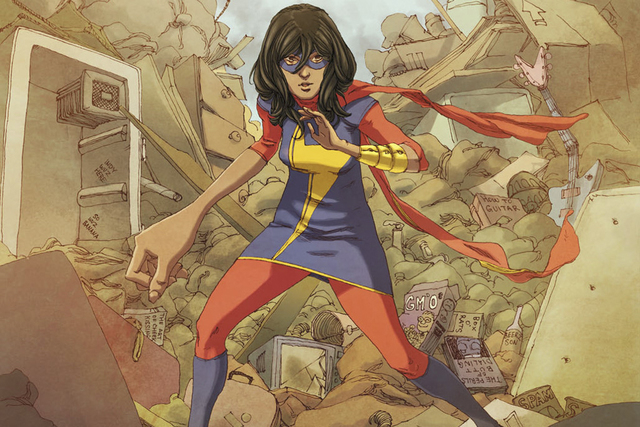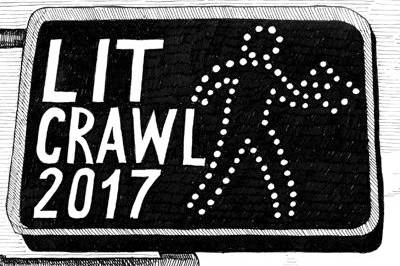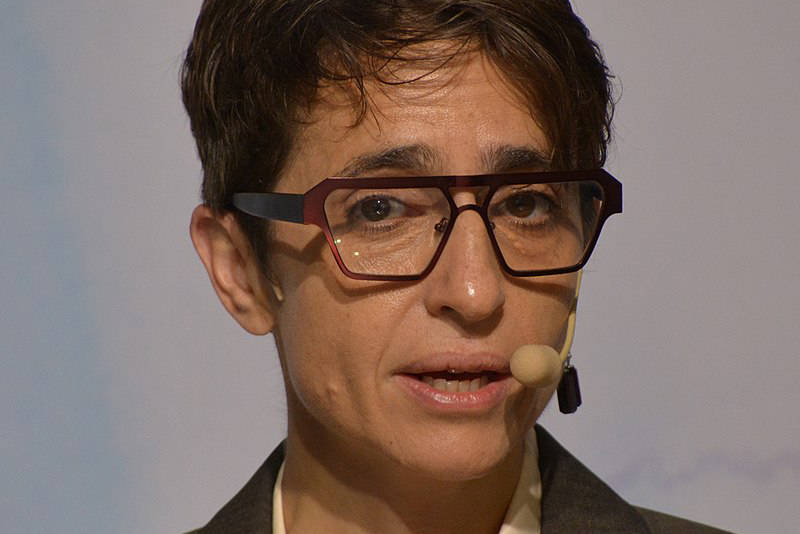The 15th annual Free Comic Book Day (FCBD) is this coming Saturday. If you’ve never heard of FCBD before, that’s terrific—you just identified yourself as its target audience. It’s exactly what it sounds like: You can wander into your nearest comic-book store (find the address at freecomicbookday.com) and walk out with a handful of free comic books, no strings attached.
Say you pick up some comics on FCBD and you like them. Say you decide you want to buy some comics, but your local comics shop has a giant wall of paperbacks and you just don’t know where to start. The ideal comic, of course, varies from person to person, but here are a few recommendations: Are you a teenage girl looking for a comic that doesn’t talk down to or ignore women? You should pick up the first trade paperback of Ms. Marvel. You say you used to read comics and you’re looking for something more fun than the cynical death march that was Batman V Superman? Give Ms. Marvel a try. Never read a superhero comic in your life? You might like Ms. Marvel. Look, I’m not saying Ms. Marvel is for everyone, but I am saying it’s about the closest thing to a comic for everyone that I’ve ever seen.
Created by Seattle author G. Willow Wilson and artist Adrian Alphona in 2013, Ms. Marvel is the continuing story of Kamala Khan, the teenage daughter of Pakistani-American Muslim immigrants from Jersey City. How she gets her powers doesn’t matter so much—her origin is the weakest part of her story, honestly—and unlike most corporate superhero comics, the fistfights are not the reason the book exists. Although it must be noted that Ms. Marvel is developing a fantastic gallery of villains, including a clone of Thomas Edison that was accidentally spliced with cockatiel DNA, resulting in a raving egomaniac of a giant bird with robot arms.
After nearly a century of hypersexualized women in comics, Kamala is, you know, just a human person. While most women superheroes wear bikinis as costumes, Ms. Marvel pointedly wears a modified burkini, the body-covering suits worn by Islamic women to comply with Quranic calls for modesty. And while many women superheroes’ powers are filtered through a male writers’ idea of femininity (remember, Stan Lee made the only female member of the Fantastic Four invisible), Kamala’s powers are strange and visually interesting: She can shrink or grow any part of her body, resulting in some glorious hyperkinetic sequences by Alphona: Kamala with 15-foot spindly legs running along rooftops or growing her hands to the size of throw rugs and slapping bad guys senseless with them.
At first, Kamala is gangly and awkward, but as the series goes on, she gets better at using her powers in an obvious-but-satisfying take on the idea of persevering through puberty. Ms. Marvel admits to a fellow superhero that “It took me a long time to get here. For a while, I just kind of felt weird and gross.” But now? “Now I feel weird and awesome!”
Early in the series, Kamala has an unrequited will-they-or-won’t-they relationship with her best friend. Superhero comics have traditionally encouraged their creators to cultivate a culture of arrested development: Spider-Man can’t ever have a happy ending because then there’s no reason to buy the next issue. But Wilson resists the clichés that have crusted atop these old tropes: Kamala is too smart and confident to waste 100 issues pining for her friend, for instance, so they talk, then move on (but of course that adds even more complexity and depth to their relationship).
Though it ostensibly takes place in Kamala’s native Jersey City, one of the most recent stories in Ms. Marvel reflects the current conversation in Seattle, as an evil real-estate developer puts a picture of Ms. Marvel on a billboard promoting a newly gentrified neighborhood without her permission. Brainwashed people, their eyes glowing purple, start moving into the neighborhood and mindlessly repeating empty catchphrases: “When my parents told me we were moving to Hope Yards, I was happy to help revitalize our city. Fresh ideas! Fresh locales! Steps from boutique shopping and high-end restaurants! Who needs Manhattan when we’ve got Hope Yards right here in JC?” It’s a story that might as well take place on the streets of the Central District.
As Wilson’s tenure on Ms. Marvel continues, the story is developing more depth. Kamala’s relationship with her parents is deepening, her hero worship is fading as she learns how to work alongside superheroes she once idolized, like Wolverine, Iron Man, and Captain Marvel, and her high school keeps getting weirder due to being continually attacked by various villains. While Captain America remains frozen in a state of perpetual brand maintenance, Ms. Marvel is a story of change, which means it’s a story of being human. Which means it’s a story for all of us.
Paul Constant is the co-founder of The Seattle Review of Books. Read daily books coverage like this at seattlereviewofbooks.com.








